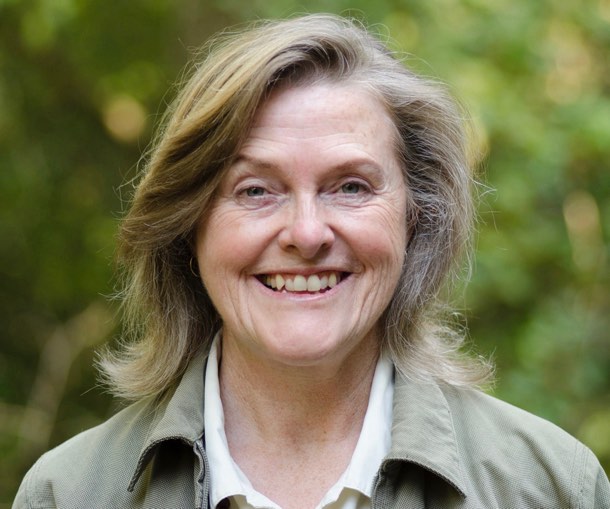Direct Benefits to Bowen Islanders from Islands Trust Programs A - Z:
Ongoing Projects
A. Acres of nature reserves: Fairy Fen, David Otter, and Singing Woods, managed (74.4 acres so far, with a combined BC Assessment Value of over $3.9 million)
B. Biodiversity, conservation planning resources and profiles are shared, e.g. Conservation Status of Bowen Island (2019) fact sheet
C. Conservation covenants on privately held land, voluntary, to guarantee no disturbance. Monitored, around 5.8 acres so far
D. Digital mapping: GIS software licenses for municipal staff (worth over $19,000 annually; 16 users BIM/ 9 users Islands Trust) and updated LIDAR and Orthophoto data products every few years
E. Ecosystem mapping; from old forest, rare wetlands, dry open woodlands and fragile wildflowers on rocky outcrops and coastlines; to small forage fish beach spawning habitat; to eelgrass below low tide, detailed.
F. Many resources to assist municipal council and staff in preserving and protecting: maps, monitoring of legislation, court decisions, new resources, reports, model bylaws, ecosystem protection toolkit, etc.
G. Review of Bowen Official Community Plan updates and amendments for consistency with mandate and Trust Policy Statement
H. Assurance that our municipality will have regard for the preserve and protect mandate and Policy Statement when adopting zoning bylaws
I. Lower risk of oil spills, other marine shipping impacts, abandoned and derelict vessels, etc as we speak with one voice on regionally significant issues
J. Support at the request of municipal council, such as help stopping BC Timber Sales logging, becoming eligible for rural grant funding, and prohibiting motorized vehicles on Mount Gardner
Current Projects include:
K. Acting on Climate Change, from measuring and protecting carbon storage in natural ecosystems, to advocating for electric ferries, to avoiding water shortages
L. Species at risk protection, with a grant from the federal government (new) ($1,328,000 over 6 years)
M. Implementing Reconciliation Action Plan
N. Promoting regional collaboration, e.g. support to Howe Sound Community Forum
O. Freshwater strategy: mapping, integrating water management into land use
P. Updating the Islands Trust Policy Statement (Islands 2050)
Ongoing Programs that Bowen Citizens Can Participate In
Q. Protect nature on your private land by donating a nature reserve or through a conservation covenant with the Trust’s charitable arm
R. Tax reduction on your land for those interested in protecting nature while saving money
S. Stewardship resources to help you care for plants and wildlife on your land and shorelines
T. Wellwater and other workshops and webinars, e.g. conserving scarce groundwater, sea level rise, eelgrass protection, rainwater harvesting, ecosystem-based adaptation to climate change
U. Community Stewardship Awards, which encourage and recognize leadership; many Bowen recipients and nominees
V. Support for local groups wishing to preserve and protect, including grants, e.g. a $5,000 Opportunity Fund grant to the Bowen Island Conservancy in late 2020 towards acquiring property for nature at Cape Roger Curtis
Myths
W. Bowen pays more than any other island: False.
Two local trust areas paid more in 2019/2020 for the same trust-wide-federation aspects that Bowen contributes to (i.e non-planner aspects) (Salt Spring and Gabriola)
X. Bowen is taxed at a higher rate than other islands: False.
Bowen paid a lower rate than the rest of the Trust for the budget areas we contribute to in 2021 (28% lower)
(Bowen landholders contribute only to some parts of the Islands Trust budget. The amount levied to Bowen Island Municipality is calculated each year in accordance with the municipal tax requisition policy which is driven by the Islands Trust Act. The annual tax requisition collected on behalf of Islands Trust has, on average, worked out to about $320,000 total. Check your property tax notice to see the portion of this you pay. In 2022 our household paid $79.84.) https://islandstrust.bc.ca/about-us/bowen-island-municipality/
Y. We can rely on MetroVancouver resources and mapping only: False.
These are not always detailed enough. A couple of examples; the meadow in Crippen Park didn’t show up on MetroVancouver’s ecosystem mapping due to the scale they used, but it did on Islands Trust’s. Climate projections reports by MetroVancouver don’t consider the limited water available and other unique island conditions, while Islands Trust’s do.
Z. Duplication of BIM services? No - Islands Trust is not a local government and does not duplicate services that are the sole responsibility of Bowen Island Municipality. It protects biodiversity through its Conservancy arm; and provides a federation of islands function through its Trust Council arm. Both arms work towards meeting the object set out in the Islands Trust Act https://islandstrust.bc.ca/about-us/islands-trust-act/
Want links or more details? Please email me at sefast3@icloud.com
Background
Imagine a greenbelt between Metro Vancouver and southern Vancouver Island, where nature, beauty, island ambience and fresh water have an extra layer of protection from unbridled development.The Islands Trust was established by the province at around the same time as the Agricultural Land Reserve. Reasons for its creation by the province are still valid today: "to preserve and protect the trust area and its unique amenities and environment for the benefit of residents of the trust area and of the province generally”.
The Trust Area ‘greenbelt’ remains roughly the size of Prince Edward Island. Today over 100 nature reserves and conservation covenants are sprinkled across the 450 smaller and 13 major islands, including Bowen, cared for by the Islands Trust Conservancy. Islanders elect other islanders to serve in a singular federation in the Salish Sea; the Islands Trust Council. Together they are part of our local government system, legislated through the Islands Trust Act.
